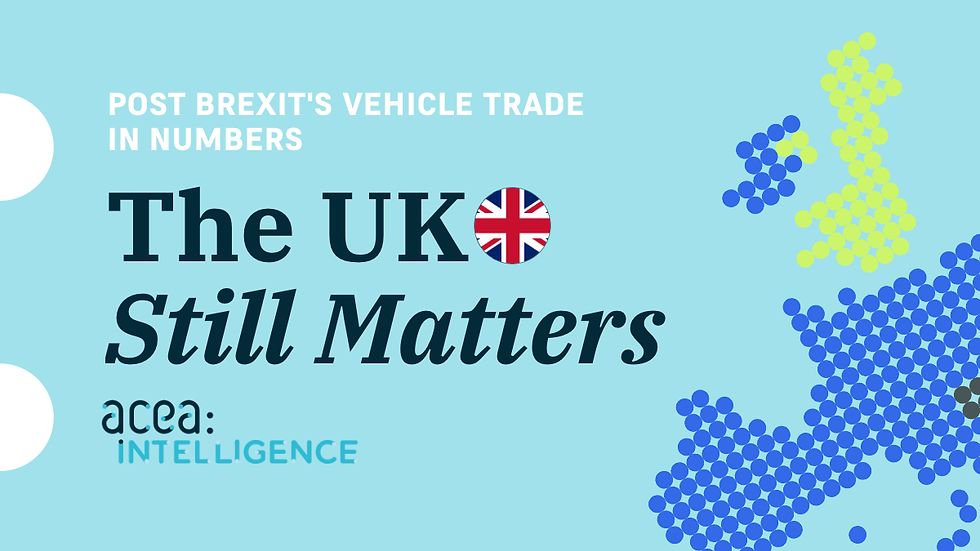Mapping the Global Automotive Rulebook — Inside the 2025 Automotive regulatory Guide
- Alexandre PROVOST
- Oct 29
- 2 min read

The automotive industry operates within one of the most complex regulatory environments in the world — and that landscape keeps expanding.
From emissions and safety to digitalisation and autonomous driving, an ever-growing web of global rules now shapes how vehicles are designed, approved, and sold across 30+ territories.
Navigating that complexity requires more than policy summaries — it demands structure, comparability, and foresight.
A single map for a fragmented world
The Automotive Regulatory Guide 2025 provides exactly that. Produced by ACEA:intelligence, it brings together the world’s automotive rulebooks into a single, harmonised reference.
Each regulation is categorised under six domains — Environment, Safety, Technical, Radio, Mixed, and Aftersales — helping professionals grasp at a glance how different jurisdictions align or diverge.
Beyond the EU, the 2025 edition expands coverage to ASEAN, the GCC, the Eurasian Economic Union, Japan, Korea, and the United States, offering a truly global view of the frameworks shaping tomorrow’s mobility.
Global comparison: convergence and divergence
Regulation is rarely uniform — and the 2025 edition makes this visible.
📘 Europe continues to lead in integrating climate and safety under a single legislative umbrella. The newly adopted Euro 7 Regulation (EU 2024/1257) not only sets stricter pollutant thresholds but introduces battery durability and brake particle limits — signalling that environmental policy and electric vehicle safety are now inseparable.
🇯🇵 Japan, by contrast, follows a granular, engineering-led approach: its TRIAS and MLIT standards (such as TRIAS 15-R153 or MLIT 619) specify detailed test procedures for rear-end collisions and EV battery integrity, mirroring UN Regulations 153 and 100 while maintaining national autonomy.
🌏 In ASEAN, harmonisation is accelerating through the Mutual Recognition Agreement on Type Approval for Automotive Products (2022–2024) — a breakthrough that aligns 19 UNECE Regulations across Southeast Asia, fostering regional integration without full legal unification.
🌍 Meanwhile, the Eurasian Economic Union (EAEU) exemplifies regulatory bloc-building: from RoHS-style hazardous substance limits (TR EAEU 037/2016) to energy-efficiency standards (TR EAEU 048/2019), its goal is internal coherence rather than convergence with global norms — creating parallel ecosystems.
The result is a world of intersecting rulebooks, not competing ones — and a growing need for comparative insight.
Turning complexity into clarity
By integrating cross-references and direct links to official texts, the guide enables users to:
Track regulatory evolution by country or theme,
Benchmark standards across markets,
Identify overlaps and gaps between regional systems (UNECE, EU, national),
Support market access and compliance strategies worldwide.
This structured approach turns scattered legal material into actionable intelligence — a foundation for faster decisions and better foresight.
Why this matters
Regulation is no longer a static constraint; it is a driver of transformation.
Understanding its global architecture is essential not only for compliance but also for strategy, investment, and innovation.
As the world moves toward climate-neutral mobility, clarity and comparability in regulation are becoming competitive assets.
Sometimes, one sentence says it all:
💬 “Data doesn’t replace expertise — it amplifies it.”
That’s the principle guiding how ACEA:intelligence turns regulatory complexity into clarity — helping the automotive industry anticipate, not just comply.
Explore the data
The Automotive Regulatory Guide 2025 offers a structured, comparative framework to analyse global regulatory evolution — turning static legal texts into a dynamic, data-driven resource for policymakers, manufacturers, and analysts alike.


